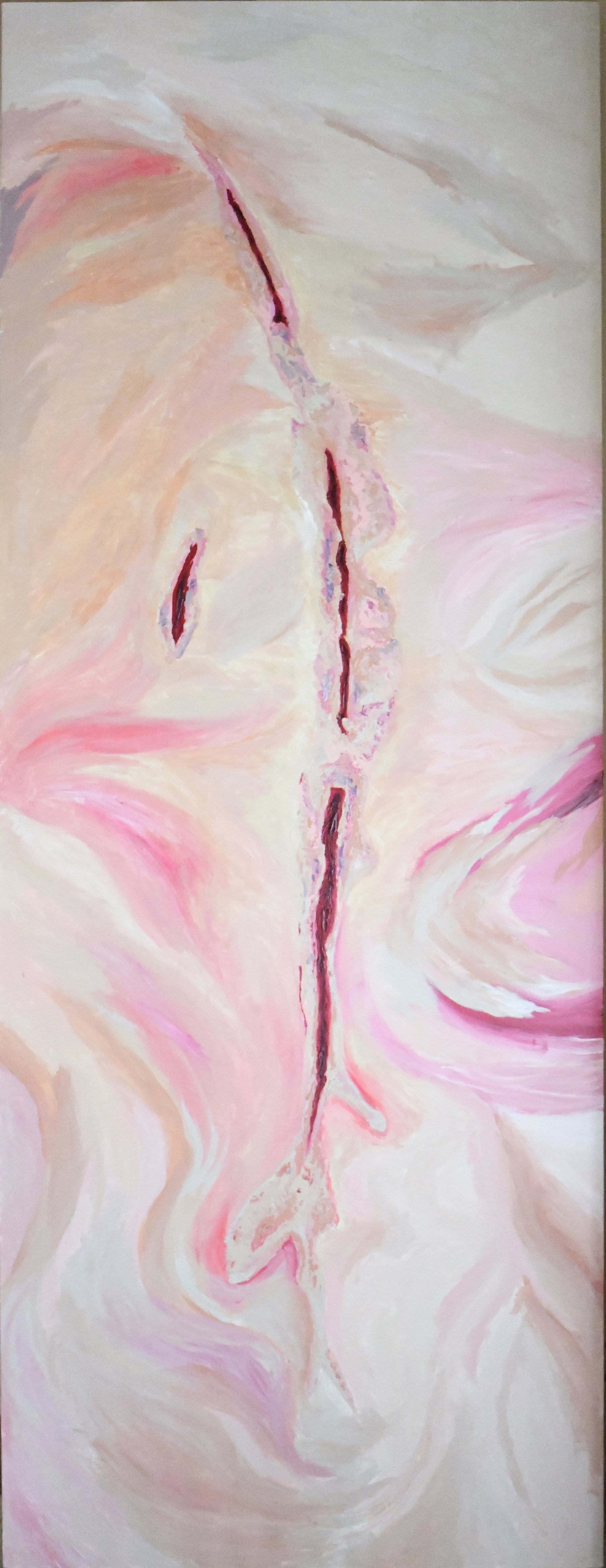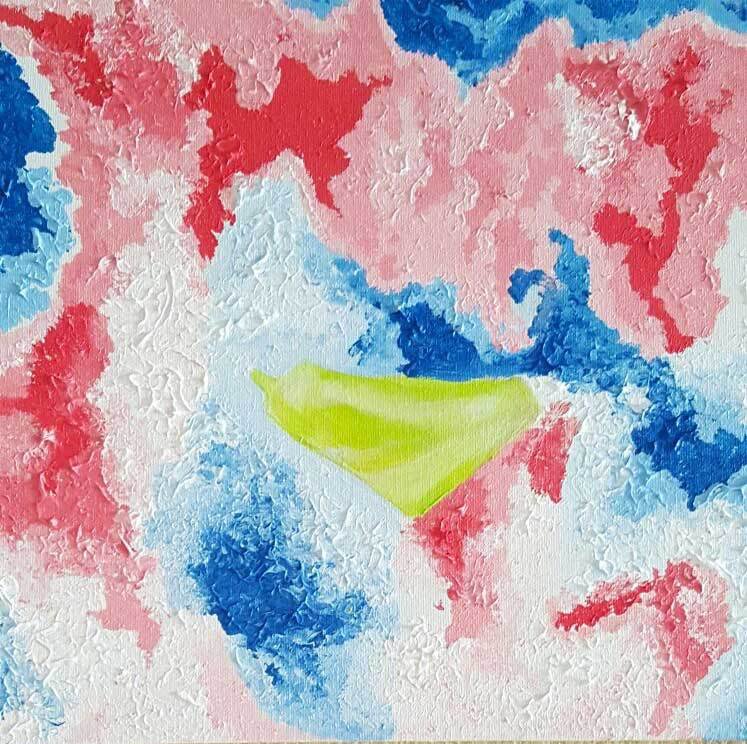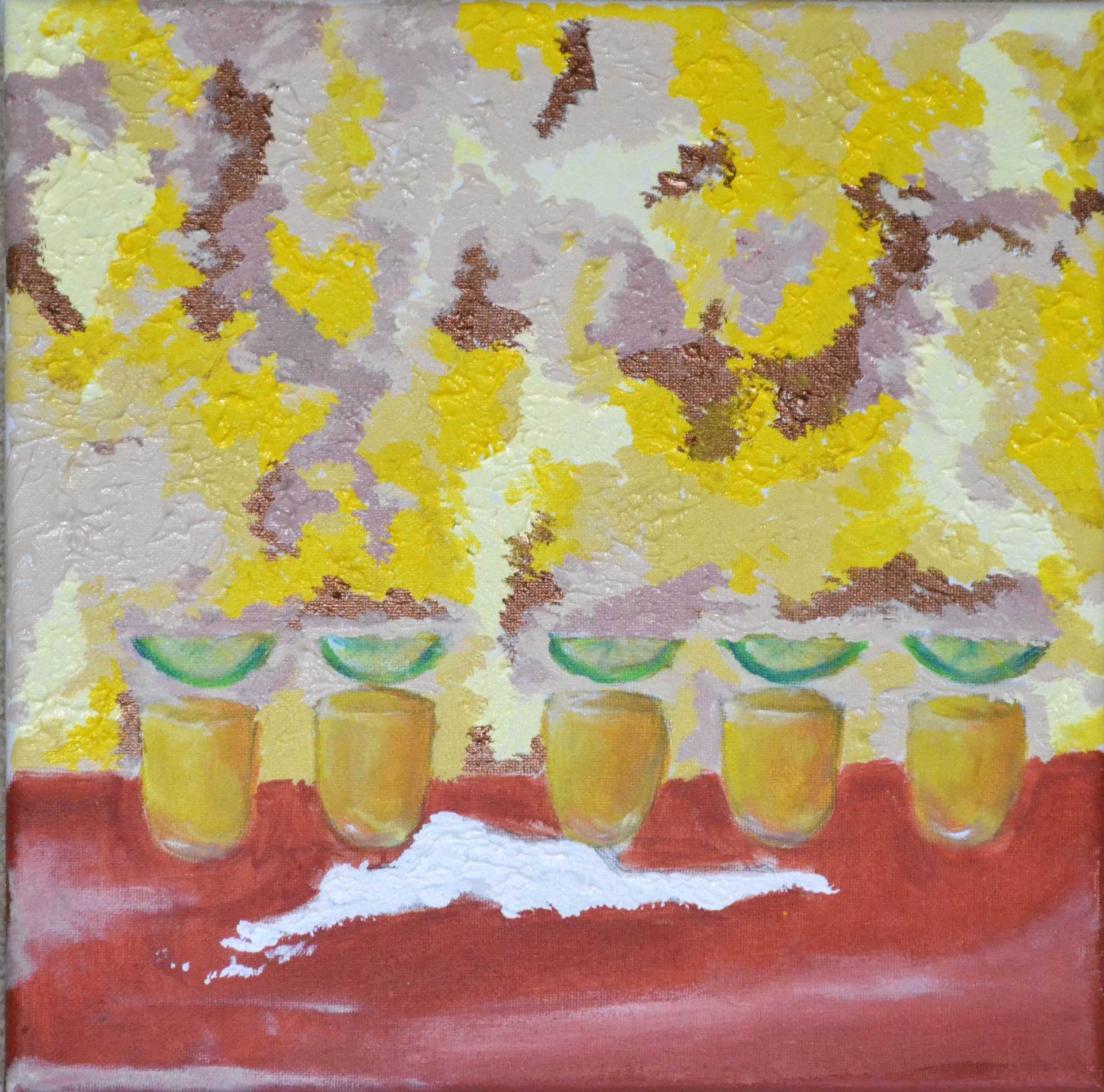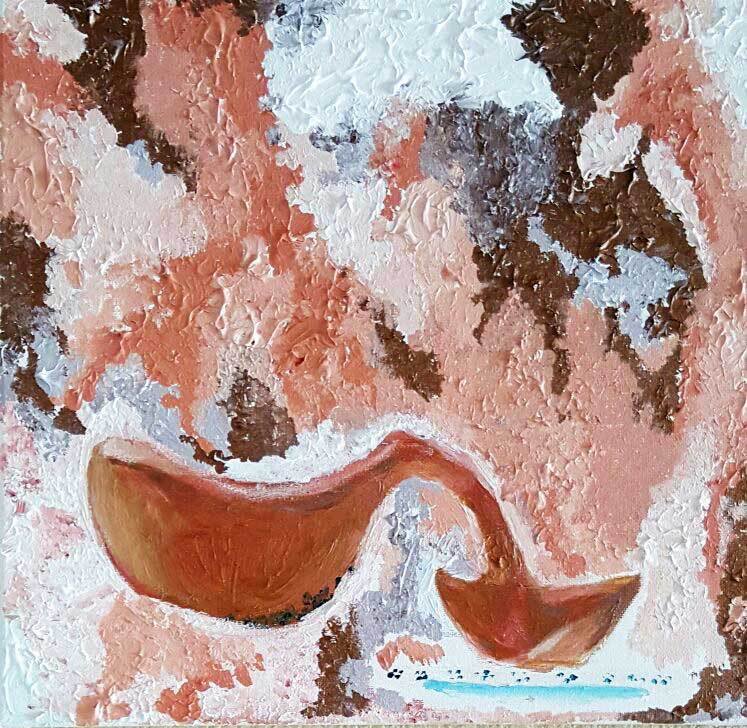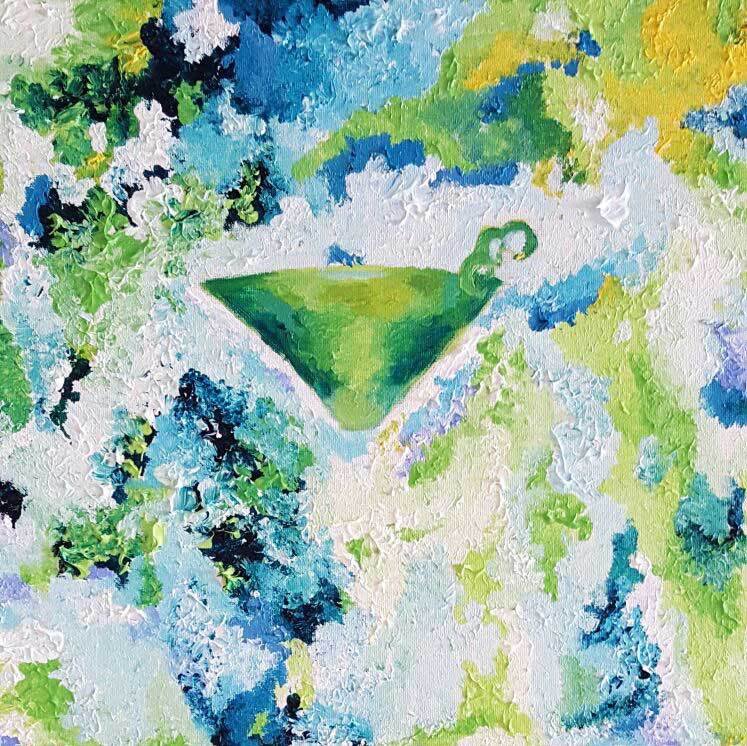Artist in conversation: Bryony Reed
Bryony Reed is a contemporary artist born in Watford, England in 1992. In her own words: “I started painting when I was two years old in Brighton, England. My dad was an artist so he greatly influenced me from a young age. He would buy me children’s pottery wheels or large sets of tempera paints, even though my family wasn’t making much money at the time. I moved to Chicago when I was 5. My first memory of Chicago is arriving in the middle of the night at O’Hare with a Sesame Street coloring book. When I moved to California at six I started taking art classes. I learned to draw realism by 11 or 12, however when I entered high school I started experimenting with my style. The work from that time looks almost cartoony, although I did sometimes paint in the post impressionist style. I think when I got into my 20s I found my signature style. Almost like a distorted reality. The first group of paintings I did were these human sized majora tarot cards. The pieces were darker than anything I had painted before. They dealt with things like drug abuse, homelessness, sex on large lose canvases. Around the “me too” movement I painted a lot of goddesses and mythological figures from around the world. In more recent years, a lot of the pieces of my work involve epilepsy, which I was diagnosed with when I was 10. I noticed that so many things were being addressed, brought attention to whether it be race, feminism, LGBTQ and so on. However disabilities were being ignored. It was like society deemed us too scary to talk about. Like we were seen as the other. Something to be kept hidden. So I decided to start painting about epilepsy on wall sized canvases so people wouldn’t be able to miss them, including the ones which are being shown.”
What initially inspired you to become an artist, and how did you develop your unique style?
I never really had a moment in which I thought to myself “I should become an artist” It really sort of just happened. I’ve been painting since I was about two and turning professional was just a natural continuation. I never really tried to develop a style either. I just painted what felt right and what I was good at.
In terms of subject matter, what themes or motifs do you frequently explore in your work, and what draws you to these topics?
I choose epilepsy as my subject quite a lot because I’ve had it since I was 10 and people tend to shy away from neurological and mental issues in the art world. Issues that face modern day society such as drugs or feminism get incorporated a lot too.
Can you discuss a specific piece or project that challenged you as an artist, and how you overcome those challenges?
Out of the two pictures chosen to exhibit the nude was hardest because I was drawing myself so I was more critical than usual. Out of the rest of my work, the hardest piece for me was a painting called “All Great and Terrible Things”. It is a painting with a lot of detail and a lot of people, each of whom I needed to give their own personality.
How do you stay connected with other artists and keep up with new developments and trends in the art world?
A lot of the more modern day trends such as paint pouring or dripping I haven’t done since I was in nursery school and still try to avoid. I do love to see other professional artists creations but I don’t try to emulate their work.
How do you incorporate feedback from critics and audiences into your artistic practice, and how do you balance this feedback with your own artistic intuition?
I mentally picture the artwork with the critics’ suggestions, before making any changes. If I agree with it I’ll change the art work, if I can only see it making the picture worse, I disregard the suggestions.
How do you stay motivated and inspired despite any setbacks or creative blocks you may encounter?
It can be hard to stay motivated all the time. If I encounter a creative block I’ll just put whatever I’m painting to the side and revisit it in about a month to a year’s time, putting my focus on a different project.
In your opinion, what role do contemporary artists play in society, and how does your work contribute to this role?
I don’t think artists play a big enough role in society. The entertainment industry tends to disregard them in favor of musicians or actors, which don’t get me wrong, I love music and film, but it does take away from the other, more behind the scenes art. Art which is equally and often more important. I see the same thing happening to writers. They are the most important person in a creation of a movie or tv show, but audiences give all credit to a show’s success to the people in front of the camera.
What do you see as the most pressing issues facing contemporary artists, and how do you plan to address these challenges in your own work?
I would say making money in art is the hardest issue as it has always been. A more modern day problem would be getting shown in galleries because most of them will only take from curators. But how can a person get a curator when their art isn’t shown.
How do you feel about exhibiting your artworks with The Holy Art Gallery?
Very Happy!
Looking ahead, what are your long-term goals and aspirations as an artist, and how do you plan to achieve them?
I would love to expand into instillation art, other than that just keep having my art shown in galleries and museums.


